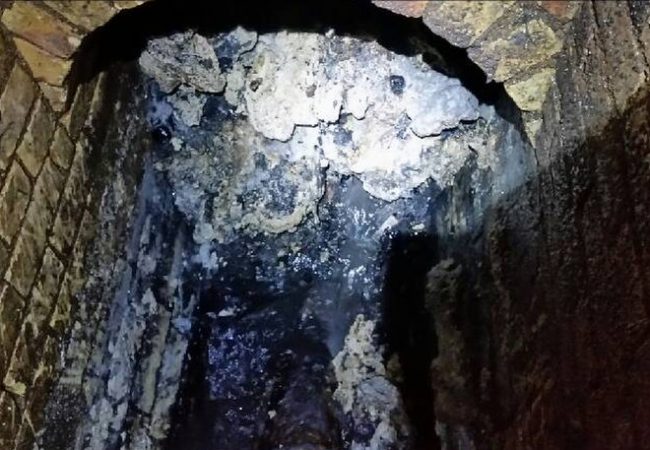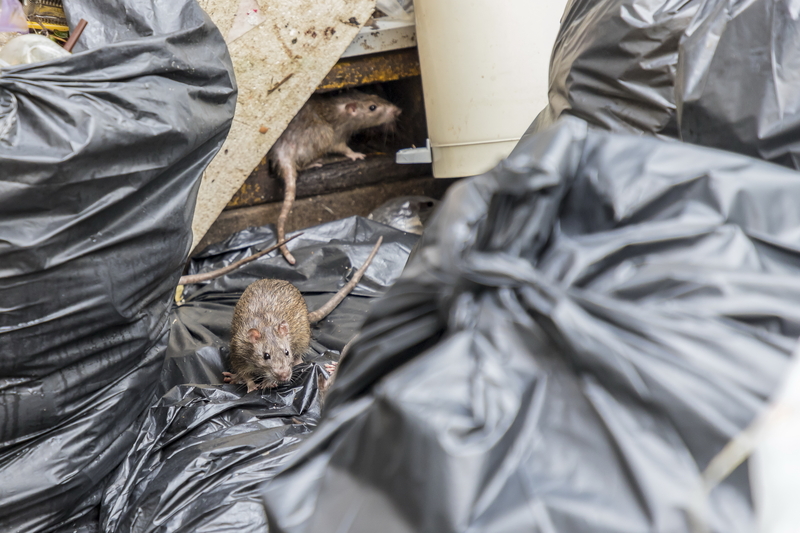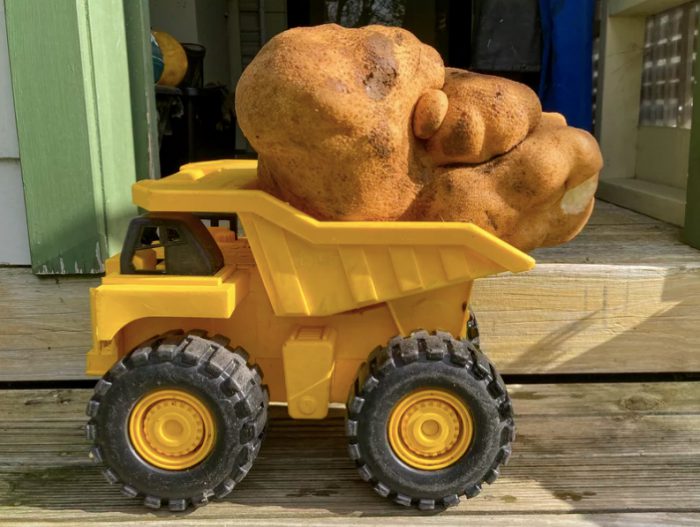Have you looked at a sign in a washroom that said something like, "Please do not flush food" or "No paper towels in the toilet" and thought to yourself, Meh, what's the worst that could happen?
"Fatberg." That's what.
The sewer system under the London neighbourhood of Whitechapel has been brought to a stinky stand still thanks to the "fatberg." That's the nickname for a 130,000 kg (143 t.) solid mass of garbage, fat, and who-knows-what-else flushed and drained into the sewers by residents. The waste, which weighs about as much as 11 school buses(!), includes diapers, cooking grease, wipes, and more. It piled up over years and years. And eventually, it hardened into a substance similar to concrete, turning the sewers into a no-flow, no-go zone.
(Before we move on with this story, we'll just give you a moment to get some fresh air. Blech!)
From cleanup to fuel up
A worker holds a chunk of a fatberg in 2014 in another part of London's sewer system. (Getty Embed)
As you can imagine, the task of cleaning up such a mess is difficult and disgusting. Workers are using high-powered water jets to slowly chip away at the waste covering 250 m (820 ft.) of sewer pipe—that's the length of two soccer fields! And this is where the tale (finally) takes a happier turn.
All this waste is getting turned into biofuel!
Biofuel is fuel made through a biological process. (Fossil fuels are made through a geological process, such as millions of years of pressure creating oil or coal.) People already make biofuel out of things like leftover cooking oil from restaurants. In the case of our friend the fatberg, cleanup workers are sending the pieces that they remove to a plant that separates the oils and fat (which can become fuel) from the other waste.
According to Thames Water, the London organization in charge of the city's water system, about 10,000 litres (2,643 gallons) of biofuel should be made from the fatberg.
Avoiding the problem
London's water authority, Thames Water, has been asking people to think twice about what they put down the drain. (Getty Embed)
This is great news! But there's another issue. How does London stop this from happening again? The biofuel is good to have, but the sewer cleanup is likely to last until October. There are much better ways to make fuel than this! Plus, back in 2013 another London sewer system was blocked by a similar fatberg and much of the city's sewers date back over 150 years to the Victorian Era.
Right now, the lead feature on the homepage for the Thames Water website? A piece on "Fatberg fighting advice." We actually like the video they made so much, we thought we'd share it. Because you don't need to live in big city or Victorian-era pipes to suffer from a fatberg of your own!
 Here's what happens when thousands of people pour fat down the drain and flush paper towels—the dreaded 'fatberg'. (Thames Water)
Here's what happens when thousands of people pour fat down the drain and flush paper towels—the dreaded 'fatberg'. (Thames Water)










😡 😎 😯
The fat stays in the body. Only poop pee and toilet paper in the toilet – PPTP!! Don”t put cooking fat down the sink. Put it the garbage.